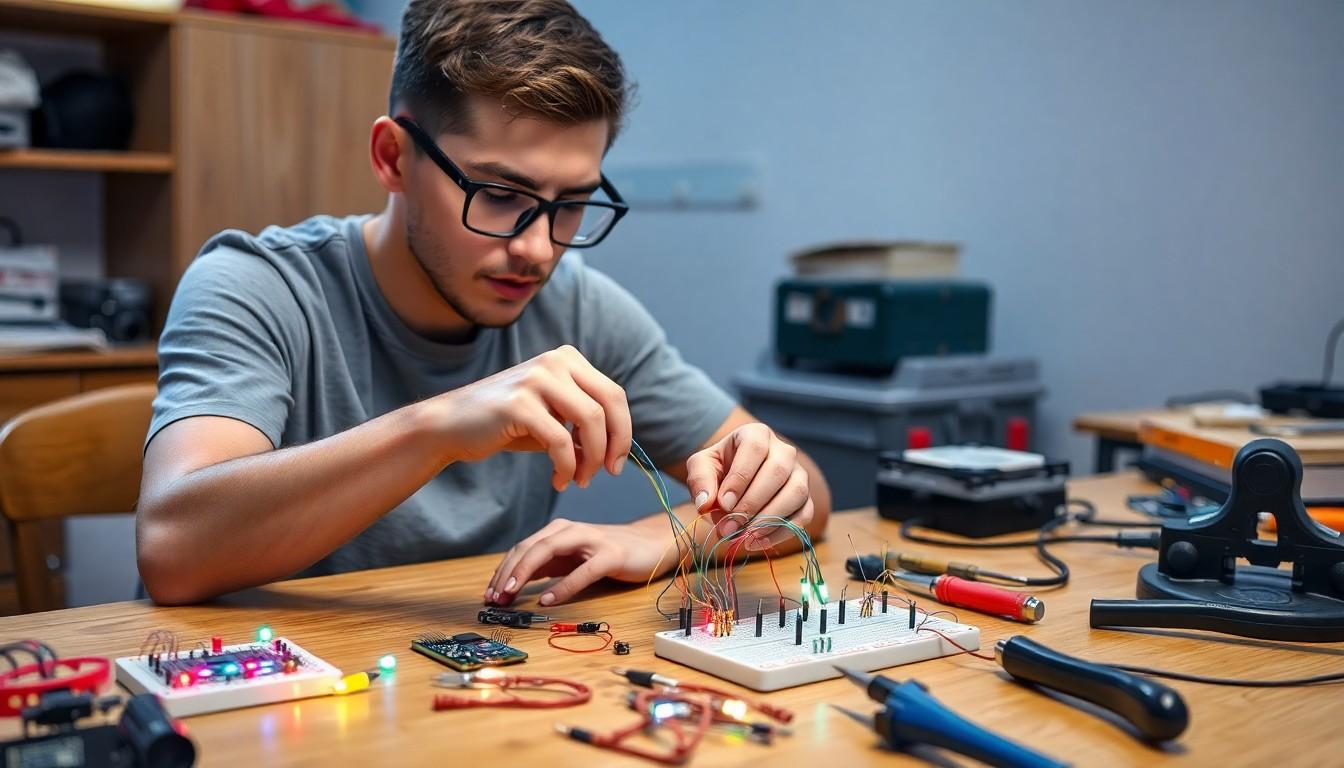In the dynamic world of competitive gaming, Helix Esports stands out as a beacon for gamers and enthusiasts alike. Founded with a mission to elevate the esports experience, this organization combines cutting-edge facilities with a passionate community. From casual players to aspiring professionals, Helix Esports offers something for everyone.
With a focus on fostering talent and promoting inclusivity, Helix Esports has rapidly gained recognition in the industry. Its state-of-the-art arenas and innovative programs provide gamers the opportunity to hone their skills and compete at the highest levels. As the esports landscape continues to evolve, Helix Esports is poised to play a pivotal role in shaping the future of competitive gaming.
Helix Esports
Helix Esports operates as a premier organization in the competitive gaming landscape. Focused on creating an inclusive environment, Helix offers state-of-the-art facilities that cater to gamers ranging from casual players to aspiring professionals. The organization emphasizes talent development through structured training programs, coaching, and mentorship.
Helix Esports hosts various events, including tournaments and community gaming nights, which further enhance player engagement and skill improvement. Additionally, the organization collaborates with educational institutions to promote esports as a viable career path. Through these initiatives, Helix aims to grow the esports community while ensuring equitable opportunities for all interested gamers.
The commitment to innovation is evident in Helix’s use of advanced technology, providing players with tools and resources that facilitate their growth. This approach positions Helix Esports as a leader in the industry, influencing the direction of competitive gaming while fostering a culture of excellence and teamwork among participants.
Core Services Offered
Helix Esports provides a range of services designed to elevate the gaming experience and support player development. Their offerings include competitive tournaments and diverse gaming events that cater to various skill levels.
Esports Tournaments
Helix Esports organizes esports tournaments, featuring popular games such as “League of Legends,” “Valorant,” and “Fortnite.” These competitions attract participants from different backgrounds, promoting inclusivity. With cash prizes, sponsorships, and recognition, tournaments foster competition and motivate players to enhance their skills. Each event utilizes advanced technology for seamless gameplay and fair competition.
Gaming Events
Gaming events at Helix Esports encompass community nights, workshops, and exhibitions. These gatherings create a social atmosphere where gamers can network and share experiences. Workshops focus on skill improvement and game mechanics, led by experienced coaches. Such events aim to strengthen community ties and provide everyone with opportunities to engage with the gaming culture effectively.
Facility and Equipment
Helix Esports boasts state-of-the-art facilities and equipment that cater to the needs of gamers at all skill levels. These resources enhance the gaming experience, fostering both competition and community engagement.

Venue Features
Helix Esports offers a spacious venue designed for optimal gaming and viewing experiences. The facility includes:
- Tournament Arenas: Equipped with high-definition screens and comfortable seating for spectators.
- Training Rooms: Dedicated spaces for focused practice with advanced gaming setups.
- Lounge Areas: Relaxing spaces that promote social interaction and community building among players.
- Streaming Stations: Professional-grade equipment for content creation and live broadcasts.
These features create an engaging environment where players can thrive and spectators can enjoy competitive esports events.
Technology and Gear
Helix Esports utilizes cutting-edge technology and top-notch gear to provide participants with the best tools available. The organization invests in:
- High-Performance PCs: Equipped with the latest graphics cards and processors to ensure smooth gameplay.
- Gaming Consoles: Including the latest Xbox and PlayStation systems for a comprehensive gaming experience.
- Headsets and Peripherals: Industry-leading audio and input devices to enhance communication and gameplay precision.
- Streaming Equipment: Professional cameras and microphones for high-quality production during broadcasts.
This commitment to advanced technology and equipment bolsters player performance, allowing them to focus on skill development and competition.
Community Engagement
Community engagement is a cornerstone of Helix Esports’ mission to foster a vibrant and inclusive gaming environment. Through various initiatives, the organization actively strengthens connections within the gaming community.
Outreach Programs
Helix Esports implements diverse outreach programs aimed at expanding access to esports for underrepresented groups. These programs include workshops at schools, summer camps, and community centers where participants receive training in gaming, teamwork, and sportsmanship. By collaborating with local organizations, Helix helps to build awareness of esports as a viable career and an enjoyable hobby. The outreach efforts consistently maintain high participation rates, encouraging more individuals to explore their passion for gaming.
Partnership with Local Gamers
Helix Esports prioritizes partnerships with local gamers and gaming communities to enhance player engagement. These partnerships foster a network of support, providing platforms for players to collaborate and share knowledge. Regular meetups, casual tournaments, and online forums create opportunities for local gamers to connect, exchange strategies, and improve their skills together. By championing local talent, Helix strengthens community ties and promotes a sense of belonging, ultimately enriching the esports experience for everyone involved.
Prioritizing Talent Development And Community Engagement
Helix Esports stands at the forefront of the competitive gaming landscape by prioritizing talent development and community engagement. Its innovative programs and state-of-the-art facilities create an environment where gamers can thrive. By hosting diverse events and fostering inclusivity, Helix not only enhances the gaming experience but also cultivates a sense of belonging among participants.
As the organization continues to champion local talent and promote esports as a viable career path, it’s clear that Helix Esports is shaping the future of gaming. Their commitment to excellence and teamwork ensures that every player, regardless of skill level, has the opportunity to grow and succeed in this dynamic field.


